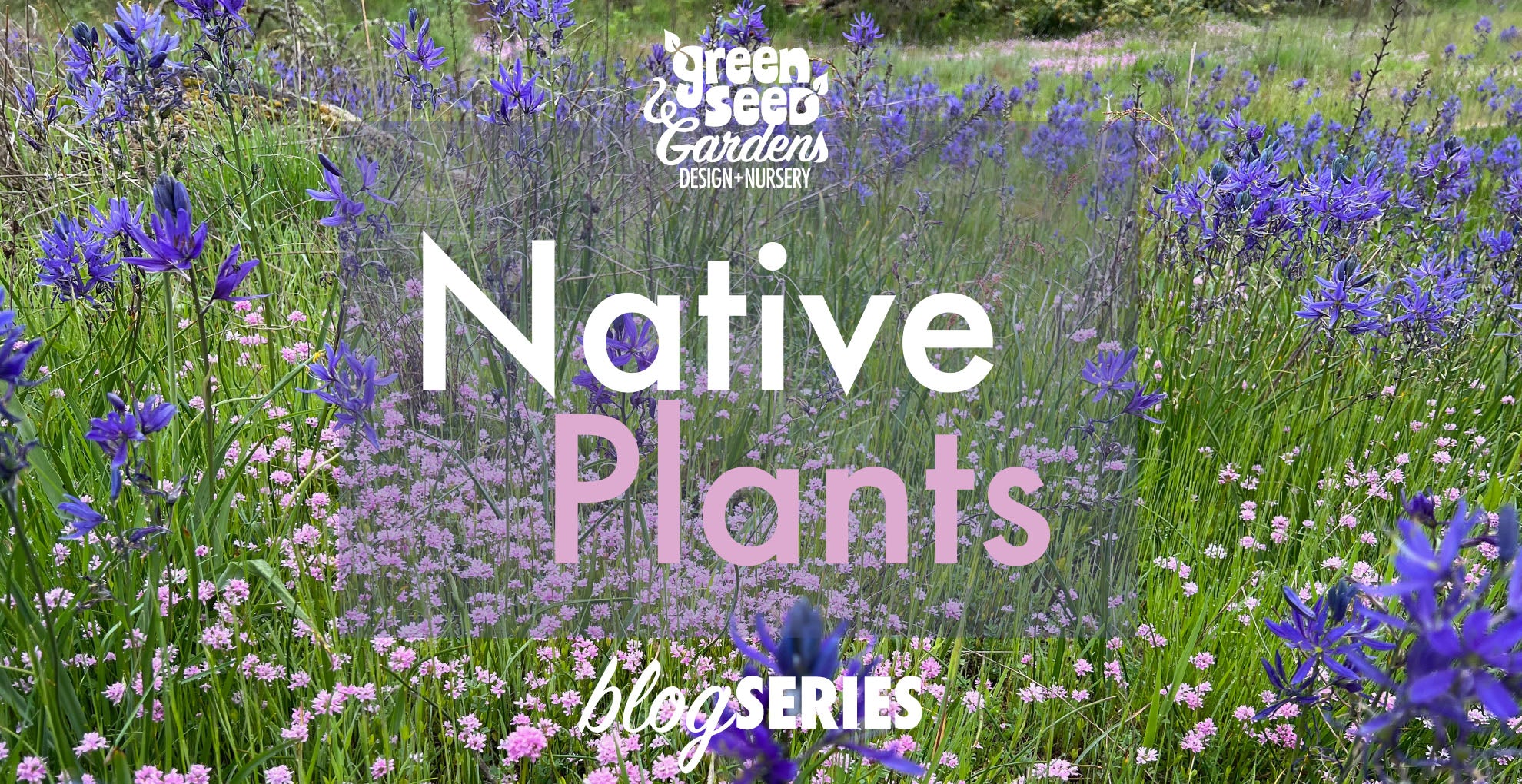
Oregon Native Plants - Part 1: An Introduction to Gardening with Natives
Are you curious about native plants? Or are you already creating a native habitat?
Over the next few weeks we are going to dive into native plant habitats; What native plants are, their value and challenges you might encounter while creating your habitat. There's more to it than just going to the nursery and buying some native plants if you want to create high quality habitat. We will provide resources and tips on how to create better habitats, including where to acquire native plants as well as some suggestions for native plants of great wildlife and/or pollinator value. You will get a framework for how to maintain your native habitat to protect pollinators and how you can feed wildlife without having to maintain a feeder. Finally we will discuss how certain non-natives can be utilized to maintain biodiversity in the face of climate change and other consequences of human activity. We look forward to sharing our insights with you.



Douglas Spirea (Spiraea douglasii)
Orange Honeysuckle (Lonicera ciliosa)
Swamp Rose (Rosa pisocarpa)
What are Native plants? We classify Native plants as species that naturally occur in a specific geographic region without direct human influence.
The primary force behind Oregon’s immense diversity of native plants (over 3600), are the regional climates that vary based on features such as the Pacific Ocean, Rivers or Mountains. The makeup of native plant communities also vary greatly across the state due to elevation, soil variations and other factors.
Human activities complicate the process of determining native species by altering landscapes and sometimes threatening local plant populations. Historical records such as those stored at the Oregon State University herbarium or other scientific resources, are essential for understanding native plant distribution amidst significant habitat changes over the past 150 years.




Redwood Sorrell (Oxalis oregana)
Sidalcea campestris (Meadow Checkermallow)
Roemer's Fescue (Festuca roemerii)
Rubus parviflorus (Thimbleberry)
The Value of Gardening with Natives
Urbanization, agriculture, invasive species, and various other human activities have led to declines in native plant species which negatively impacts wildlife and pollinators. Loss of native habitats like Oregon White Oak Savannah, which is now just a small fraction (1-2%) of its historically expansive range in the Willamette Valley, has resulted in the decline of native birds, insects and other wildlife.


Native Bee, Potentilla gracilis || Common Camas (Camassia quamash)
Fortunately organizations such as Columbia Land Trust and The Nature Conservancy as well as government agencies including Oregon Metro are actively working to restore habitats and protect sensitive species. However, more needs to be done because fragmentation and increased spacing of habitats in urban and agricultural areas make it more challenging for wildlife to travel between patches of suitable habitat and maintain healthy populations. Certain pollinators will only lay their eggs on specific plant species and when that plant is gone from the landscape so is the pollinator.



Canemah Bluff Nature Park - Oregon City
That’s where you come in, by following some basic guidelines outlined in this blog series you can create well planned, biodiverse habitats in your own backyard.
Re-wilding part of your outdoor space with native plants along with neighbors on the same mission helps create habitat corridors, connecting fragmented populations and allowing native wildlife species to thrive through increased genetic diversity. This in turn benefits your garden by providing natural pest control and supporting native pollinators which are an essential component of a thriving vegetable or fruit garden. In fact some fruiting plants such as blueberries will produce crops of greater size and quantity when native bees are present through "buzz pollination", something non-native honeybees are unable to do.
When you are ready to take the next step and start planning your habitat garden and you live in the Portland area we encourage participation in The Backyard Habitat Certification program which supports local homeowners in enhancing wildlife habitats. If you are feeling overwhelmed and don't know where to start we provide stand alone garden consultation and habitat-focused design services.


